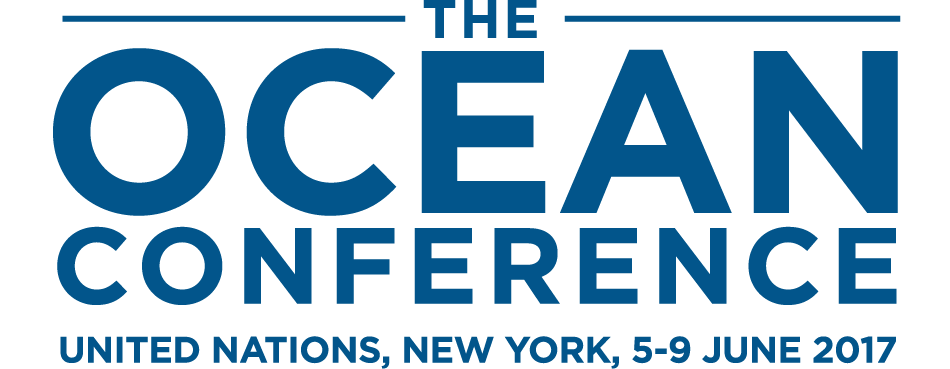Daily report for 6 March 2018
1st Part of the 24th Session of the International Seabed Authority
On Tuesday, the Council of the International Seabed Authority (ISA) started consideration of draft regulations on the exploitation of deep-seabed minerals in an informal format. Discussions focused on:
- the process to discuss and further develop the draft regulations;
- the relevance of the regulations for sustainable development and environmental protection;
- “what, how, when and whom the Authority will regulate” in the pathway from exploration to exploitation and beyond; and
- the payment mechanism.
PROCESS TO DISCUSS DRAFT EXPLOITATION REGULATIONS
Council President Mykeburst called on participants to provide the best possible guidance to the LTC to advance its work on revised draft regulations for consideration in July 2018. He reported that the Bureau had proposed addressing the regulations informally to facilitate a frank discussion, and convey the outcome as a Council President’s summary to the Legal and Technical Commission (LTC), rather than as a decision formally agreed upon by the Council. This, he explained, would avoid a drafting exercise in the Council. Council President Mykeburst proposed circulating his draft summary on Thursday or Friday morning. He noted no objections to the proposal. FRANCE queried the difference between a formal or informal session. CHINA considered the proposed President’s summary “constructive.” The AFRICAN GROUP noted that the Council should be in a position to adopt a decision or summary report by the end of this meeting, which should be action-orientated and sufficiently advanced to guide the LTC forward.
The Secretariat introduced a briefing note to the Council on the submissions on the draft regulations (ISBA/24/CRP.1). GERMANY identified as gaps in the briefing note, Council agenda and draft regulations: environmental thresholds, spatial protection, and availability of best technology in the mining industry. He also: recommended releasing drafts with sufficient time for review, supported by BRAZIL and AUSTRALIA; enquired about workshop schedules for 2018; and urged the Secretariat to ensure a timely and cost-effective working procedure. BRAZIL and AUSTRALIA indicated that workshops cannot replace ISA decision-making or legal rules.
BRAZIL and JAMAICA noted the need for balanced expertise within the LTC. BELGIUM suggested increasing the LTC’s capacity, knowledge and expertise, especially on environmental issues.
GENERAL VIEWS ON THE DRAFT REGULATIONS
In order to “leave no-one behind,” SOUTH AFRICA emphasized the need for: respect of UNCLOS and the 2030 Agenda for Sustainable Development in developing the new regulations, taking into consideration benefit-sharing with humankind, which was supported by BRAZIL; an appropriate payment mechanism, which is to date insufficiently developed; and ambitious benefit-sharing rules. CAMEROON emphasized: engaging in action-oriented and result-based deliberations, which was supported by TONGA, the UK and MOROCCO; aligning with the spirit of UNCLOS, the common heritage principle, the Rio+20 outcome, and the 2030 Agenda, especially Sustainable Development Goal 14 (life below water), which was supported by BRAZIL; and restructuring the Secretariat to address future challenges. MOROCCO identified environmental protection and common heritage as cornerstones of the regulations, guided by the UN Ocean Conference’s Call for Action and the spirit of the UN General Assembly’s process on marine biodiversity of areas beyond national jurisdiction (BBNJ).
MEXICO suggested: minimizing risks, given the uncertainties surrounding deep-seabed mining; ensuring transparency, cooperation with various bodies and stakeholders, and developing countries’ full participation, including in benefit-sharing. NORWAY considered the draft regulations adequate for an initial discussion to pave the way for profitable mineral production to benefit humankind, emphasizing that the regulations should serve contractors and investors, while respecting existing UNCLOS environmental obligations.
FRANCE recommended clearly including in the regulations: environmental protection, common heritage, and precautionary and polluter-pays principles; and sponsoring states’ environmental responsibility. ITALY highlighted: short- and long-term standards for environmental impact assessments (EIAs); the role of marine scientific research (MSR); good industry practices; payments, administrative fees, and royalties; and stronger terms on closure. BELGIUM called for: developing an environmental monitoring and management plan; and transparent compensation in cases of serious harm to biodiversity from exploitation.
INDIA called for balancing and safeguarding interests, including those of contractors. CHINA suggested: balancing benefits to humankind, sponsoring states’ interests, and contractors’ rights and obligations; giving more weight to best available scientific information, to enhance marine environmental protection; and including a benefit-sharing mechanism, to reflect the common heritage principle.
JAPAN noted the need for “sensible” regulations, noting recent experiences mining polymetallic sulfides, while safeguarding the environment. CANADA argued that the regulations need to take into account potential environmental impacts, the precautionary approach, and best available practices, as well as to balance commercial viability and effective benefit-sharing.
The Deep Sea Conservation Coalition (DSCC) called for a broad definition of “interested persons” to ensure public participation, and requesting testing of mining equipment as part of an EIA before any exploitation license is approved. IUCN recommended explicitly including in the review of applications a wide range of interests, including acknowledging the Convention on Biological Diversity (CBD) criteria for ecologically or biologically significant marine areas (EBSAs) and the World Heritage Convention criteria for outstanding universal value.
The INTEROCEANMETAL JOINT ORGANIZATION requested clarifications on exploitation applications without a prior exploration contract, and the extension of exploration contracts.
UNDERSTANDING THE PATHWAY TO THE EXPLOITATION AND BEYOND
The Secretariat noted that practices in parallel industries and member states’ experiences in the extractive industry sector could be drawn upon. NORWAY underscored the need for an ambitious, timely, and flexible exploitation workplan, despite current challenges related to transparency and environmental protection. SINGAPORE called for: coherence between exploration and exploitation regulations, supported by TONGA, the UK, AUSTRALIA and INDIA; explicit requirements for each phase; consideration of data collected in the exploration phase to produce pre-feasibility studies for exploitation; and regulation of exploration activities undertaken as part of the exploitation phase.
TONGA underscored: further developing rules on the different exploitation stages, considering subsequently how to adapt to evolving business standards; the necessary information for an exploitation work plan, which is essential for the pre-feasibility study; health and safety requirements for crews and third parties that may be directly impacted by the proposed activities; clear timeframes; and environmental reports and audits, which must be updated at relevant stages of the contract. JAMAICA prioritized clarity, transparency, inclusiveness and predictability.
AUSTRALIA queried how contractors would interact with other users of the Area, such as marine cables operators. The UK suggested setting deadlines for the ISA to respond to contractors’ applications. CHINA reflected on: regulating exploration and exploitation; defining mining and contract areas; and developing guidelines or procedures for setting up preservation reference zones (PRZs) and impact reference zones (IRZs). IUCN noted that exploration regulations that are not yet fully implemented will play a role in the exploitation regulations.
PAYMENT MECHANISM
Richard Roth, Massachusetts Institute of Technology (MIT), presented on the economics of mining polymetallic nodules, highlighting processes, costs, revenues and associated variables. He explained that the MIT has developed a dynamic cost-analysis model, which leverages previous and current seabed-mining studies considering upfront and operational costs. Providing an overview of price-setting models, he noted price uncertainty as a constant reality and explained three systems to consider revenue-sharing between the contractors and the common heritage of mankind: mass-based, revenue-based, and profit-based. He noted hybrid models are feasible, and that monitoring challenges are mainly linked to the profit-based option. He concluded outlining progress in building three interconnected models: a cost model, a price-forecast model, and a cash-flow model; and suggested, as next steps, running models under different scenarios to provide guidance on the revenue-sharing mechanisms and rates.
CHILE asked about the competitivity of deep-sea versus land-based mining, given the challenging working environment. Roth commented that most analyses show that, despite very high operating costs at sea, the task of collecting nodules is rather straightforward compared with some of the challenges associated with land-mining. Responding to CAMEROON, Roth emphasized that: there are no guarantees in investment projects, but “our analysis makes decision-making more confident”; high-level third-party analysis of prices offers better projections than current prices; and further work is needed on sharing benefits within the common heritage regime.
ITALY considered the market perspective fundamental, in particular for the payment mechanism, noting price volatilities in previous decades, the need for political adjustments and the fact that, by setting fees and royalties, the ISA becomes part of the cost construction for contractors. Replying to ARGENTINA, Roth highlighted: the need to include insurance-related costs; an attempt to distinguish between what percentage of the capital would be self-financed and what would have to be raised from the market; efforts to model uncertainties through a distribution of price forecasts with statistical simulation; and the need to include in the cost model social benefits and negative impacts from mining both on land and in the deep sea.
GERMANY noted market price variability for manganese depending on its purity, with Roth responding that, assuming the cost of metallurgical processing, a rather pure manganese was taken into consideration, following a conservative approach given probable major impacts on the price of high-value, high-purity manganese. On a question on price risk mitigation from CÔTE D’IVOIRE, Roth considered it challenging and speculative to hold back the product from the market, noting associated opportunity costs. MOROCCO called attention to a revenue-sharing scheme that considers benefits after deducting costs, with Roth underscoring the goal to show trade-offs, rather than select a revenue-minus-cost model at this time. On states whose economies may be impacted by seabed mining, Roth noted the need to understand if prices will be affected, in order to quantify impacts, and, if necessary, consider including compensation.
EGYPT queried: the monitoring parameters of the payment system; the existence of a database on all contracts and their revenues; and the fairness of revenues vis-à-vis the common heritage regime. On UGANDA’s concerns on impacts from sediment created by disturbance to the seafloor and mining operations discharging the processed water back into the oceans, Roth agreed on the need to include costs related to water treatment. Responding to CHINA, he underscored the need for more research to develop models for minerals other than polymetallic nodules and to address environmental impacts.
Responding to the DSCC, Roth noted that: the cost of insurance is currently lumped into general administration costs, added as a multiplier to the calculated costs; a liability fund could be included in the cash flow, and future scenarios should include different levels of liability; and valuations of broader ecosystem services or genetic resources have not been included in the model, which tries to identify the net, pure, and direct economic numbers, assisting the final decision on which benefits should be pursued and which costs should be avoided.
IN THE BREEZEWAYS
Many delegates appeared satisfied with the eagerly anticipated MIT presentation, which was “carefully crafted to address an audience of non-economists,” as a delegate remarked. Despite the insights gained by the end of the day on the economic side of the draft exploitation regulations, another delegate commented anxiously that “the complexity of addressing economic risks, future projections with their intrinsic uncertainty, price volatilities, and supply-and-demand considerations is still overwhelming!” The sentiment was echoed by a long-standing observer, who pointed out that “we still haven’t factored in non-economic considerations, such as environmental costs, valuation of ecosystem services, or social and ethical concerns.”
-->
Specific funding for coverage of the Ocean Conference - June 2017, has been provided by the
XXX, XXX, and XXX
-->
IISD Reporting Services is a division of the International Institute for Sustainable Development (IISD).
Earth Negotiations Bulletin (ENB), ENB+, and Knowledge Management for Sustainable Development
are branches within IISD Reporting Services.
© 1992-2018, IISD Reporting Services. All rights reserved.







